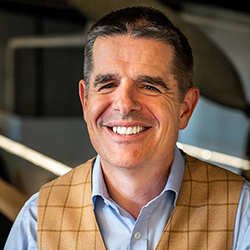Workshops: Wind Engineering of Tall Buildings: Where Have We Been, and Where Do We Need to Go?

Roy Denoon
Vice President
CPP Wind Engineering and Air Quality Consultants, Denver
The field of wind engineering of tall buildings is now a little more than 50 years old, but has it stagnated? This presentation reviews the advances made in the last half-century, asking which of the fundamental assumptions need to be revisited, and describes current efforts to move the field forward. As wind effects govern the design for lateral loads and responses for a large proportion of the world’s tall buildings, whether for strength or serviceability design, the optimal determination of these effects is critical in the sustainable development process to minimize both materials usage and construction costs.
The science of boundary-layer wind tunnel testing is reasonably well established, based on synoptic wind parameters, but the influence of storm types of different temporal and spatial characteristics is still not well understood or quantifiable, despite these being the governing wind characteristics in many locations in the world. The determination of site-specific wind speeds and directionality and how, or whether, these should be matched to local codified values also has a very strong influence on structural design. The significance of these parameters are illustrated, with reference to some key examples.
Design of structures for wind effects has also, until now, been conducted almost entirely in the linear elastic range. There are several current efforts underway to develop performance-based wind design. Progress in these areas is described, along with some of the key challenges that need to be solved before these approaches can be more widely adopted. The challenges in moving the industry forward to address the outstanding needs are discussed, and approaches are proposed.
